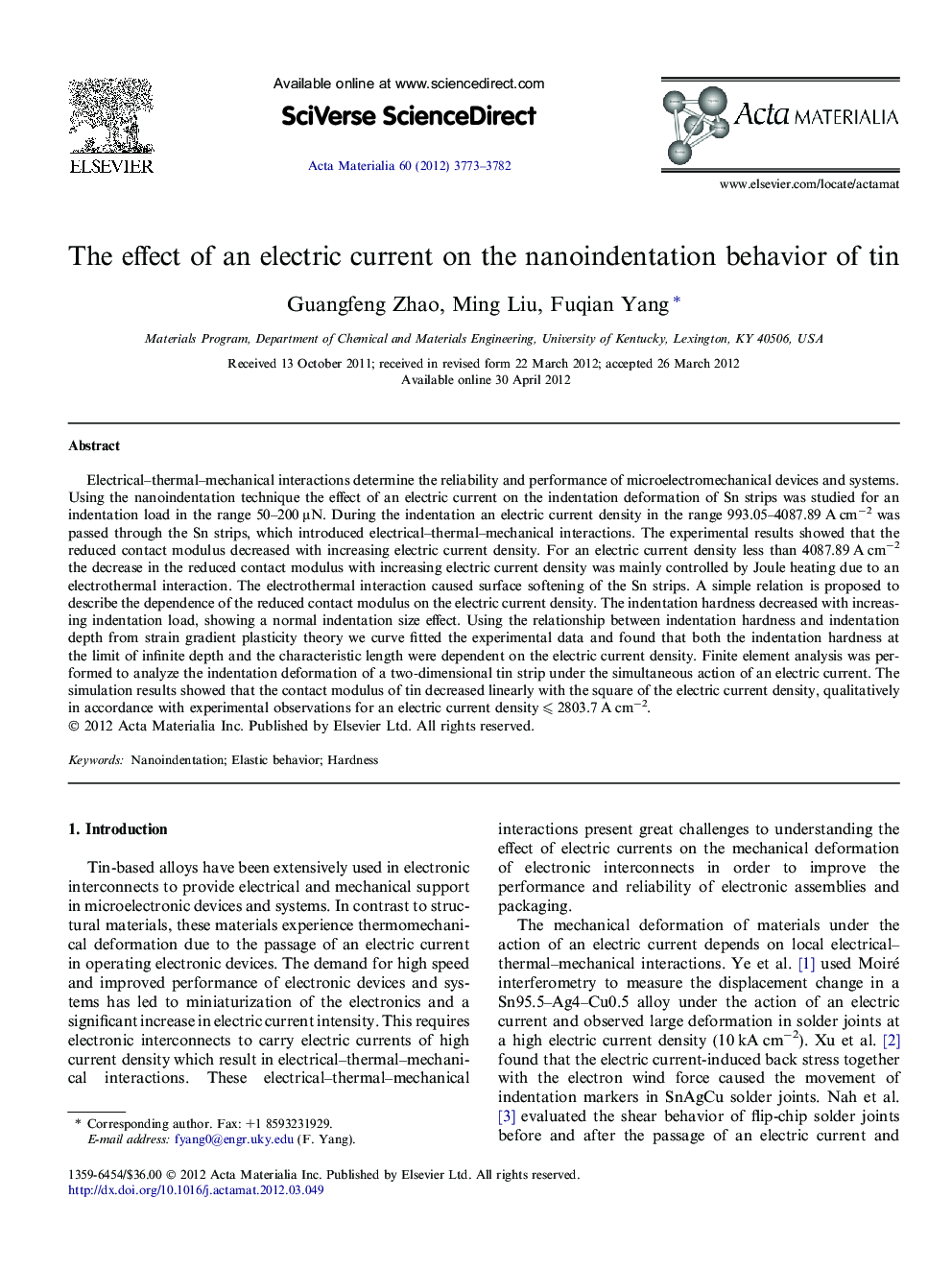| Article ID | Journal | Published Year | Pages | File Type |
|---|---|---|---|---|
| 1446731 | Acta Materialia | 2012 | 10 Pages |
Electrical–thermal–mechanical interactions determine the reliability and performance of microelectromechanical devices and systems. Using the nanoindentation technique the effect of an electric current on the indentation deformation of Sn strips was studied for an indentation load in the range 50–200 μN. During the indentation an electric current density in the range 993.05–4087.89 A cm−2 was passed through the Sn strips, which introduced electrical–thermal–mechanical interactions. The experimental results showed that the reduced contact modulus decreased with increasing electric current density. For an electric current density less than 4087.89 A cm−2 the decrease in the reduced contact modulus with increasing electric current density was mainly controlled by Joule heating due to an electrothermal interaction. The electrothermal interaction caused surface softening of the Sn strips. A simple relation is proposed to describe the dependence of the reduced contact modulus on the electric current density. The indentation hardness decreased with increasing indentation load, showing a normal indentation size effect. Using the relationship between indentation hardness and indentation depth from strain gradient plasticity theory we curve fitted the experimental data and found that both the indentation hardness at the limit of infinite depth and the characteristic length were dependent on the electric current density. Finite element analysis was performed to analyze the indentation deformation of a two-dimensional tin strip under the simultaneous action of an electric current. The simulation results showed that the contact modulus of tin decreased linearly with the square of the electric current density, qualitatively in accordance with experimental observations for an electric current density ⩽ 2803.7 A cm−2.
